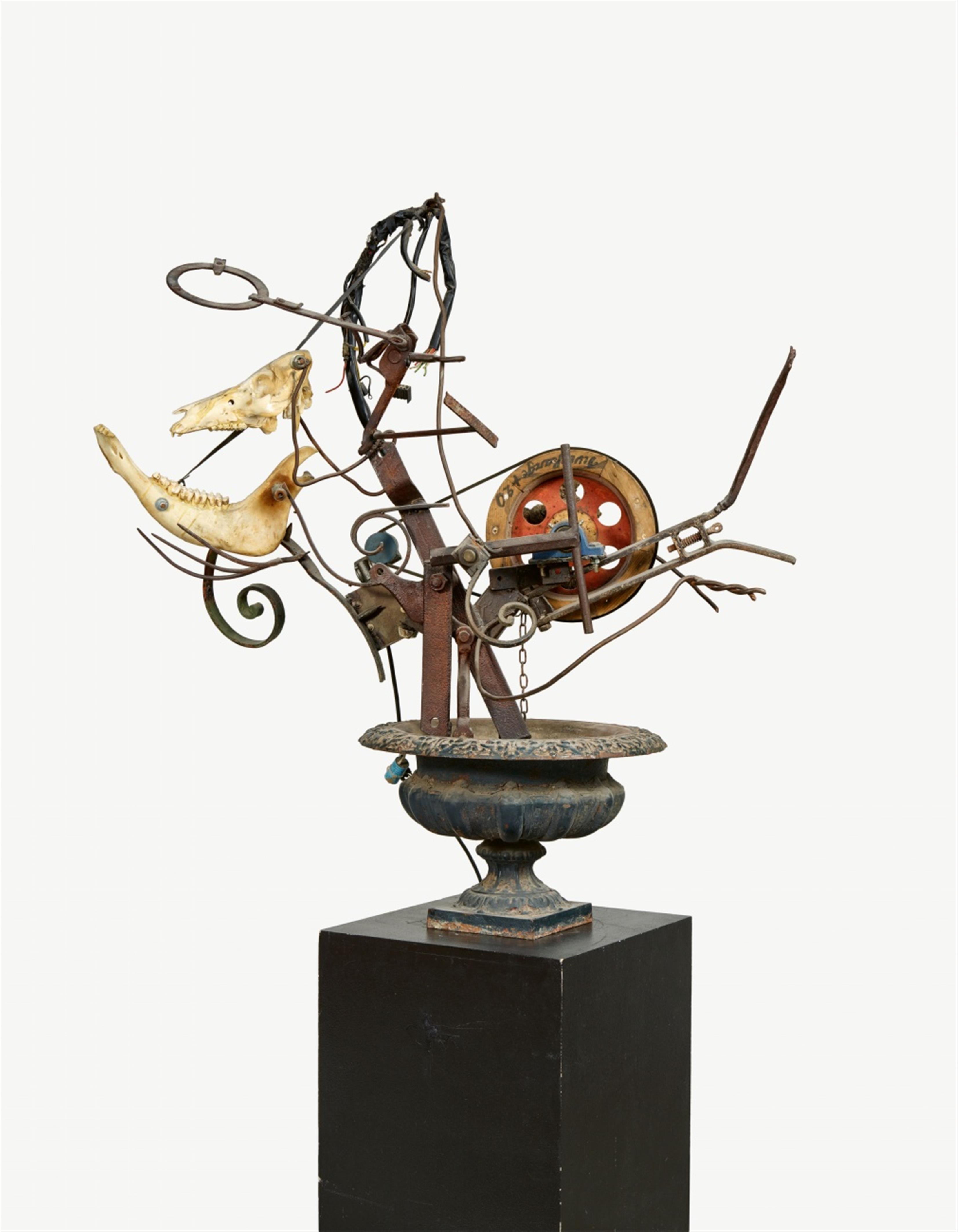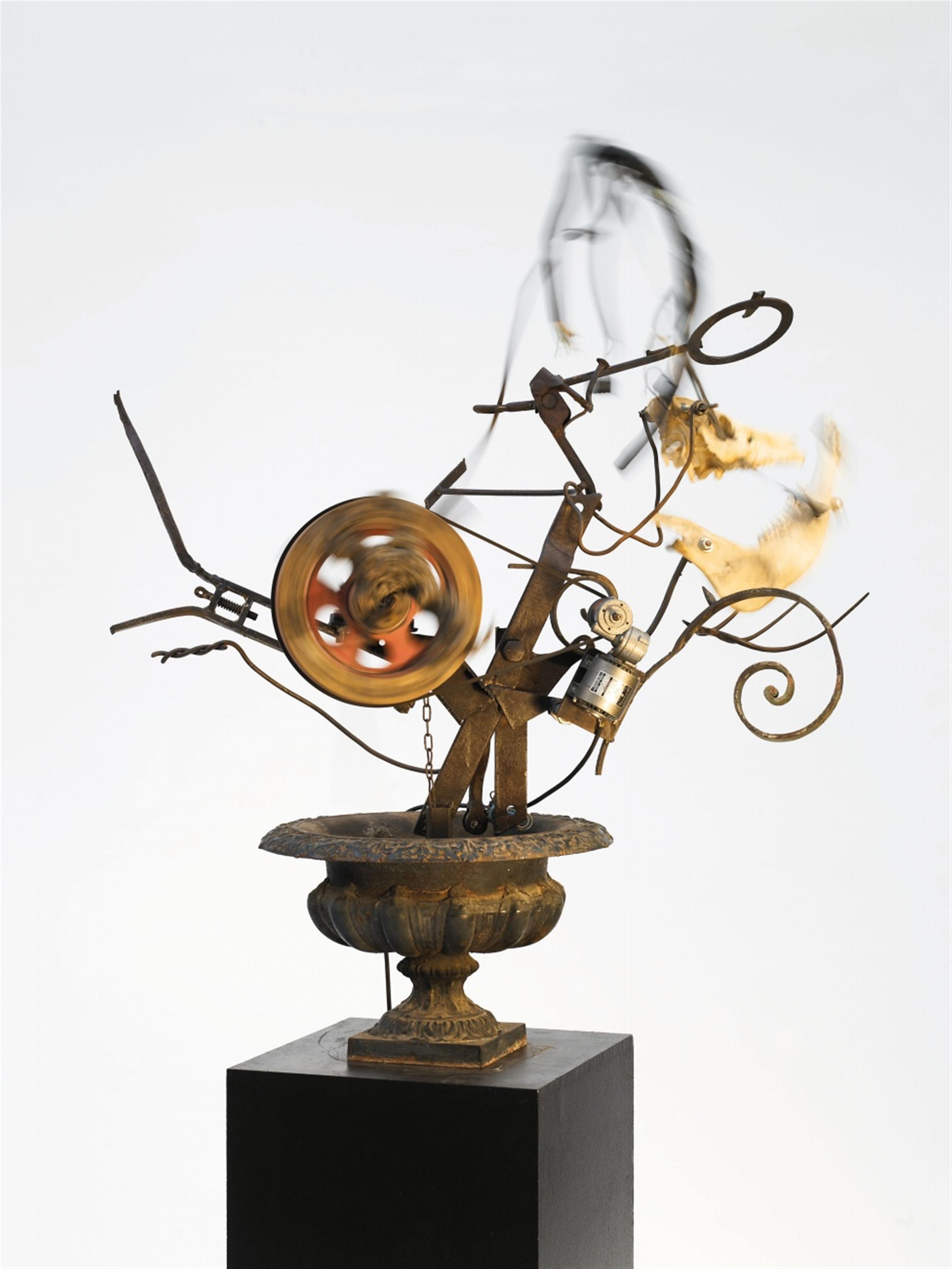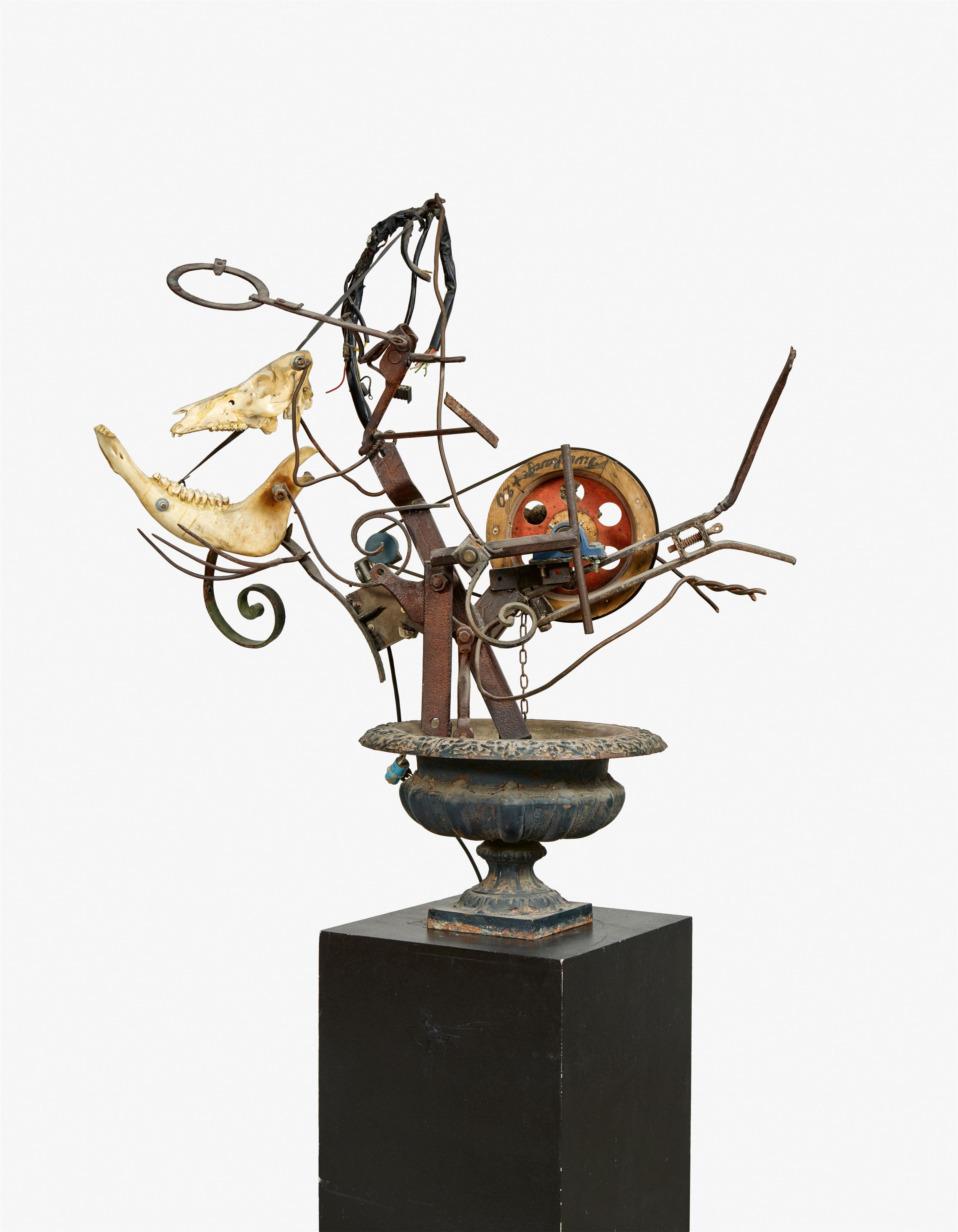Jean Tinguely
PROLETKUNST Nr. 3
1989
Sculpture made of iron, root, animal skull, wooden wheel etc., and electric motor. Approx. 138 x 99 x 100 cm on black wooden plinth 80 x 50 x 50 cm. - Minor traces of age.
Jean Tinguely's objects are a delightful mix of curious individual objects such as everyday finds, metal scrap, electric scrap, nostalgic bric-a-brac, bones, and other materials unfamiliar to art. A motor moves parts with a simple transmission, balances them to and fro, makes them dance, emits noises; this welded prodigy is like a caricature of a technical relic from earlier times, reflects turbulence and chaos even until today, and it is fascinating: whether immobile or in the restlessness of movement. Tinguely's functioning works are the expression of new conception of art and lastly also a parody emphasizing the traditional aesthetics of the concept of a work. Electric motors and wheels become the heart of a construction contrary to any engineering expertise and embody the utopia of an endless world of movement in all areas of life according to the maxim: anything can be connected, any material is worthy to become art and is useful for useless machines. The perfectionism simulated by Tinguely finds its fulfilment in the ugliness and sometimes shabbiness of the individual parts 'elaborately' welded together. Of course, this does not do his work justice as human aspects resonate in the machines, a fundamental point of the artist's work when it comes to contemplating the correlations of our world as a machine. There are many such role models. In his painting from 1912, Marcel Duchamp perceives 'The Bride' as a machine with female forms, while Max Ernst and Francis Picabia see their Dadaist machine pictures from around 1920 as an opportunity to formulate the levels of meaning of human relationships in a cryptically charming way. With his subversive machines, Tinguely both irritates and amuses the observer when the naked animal skull bones wobble and the machine produces rattling sounds. They are an expression of perverse delight.
Catalogue Raisonné
Christina Bischofberger, Jean Tinguely, Werkkatalog, vol.3, Skulpturen und Reliefs 1986-1991, Zurich 2005, cat.rais.no. 873
Provenance
Private collection, Belgium; private collection, North Rhine-Westphalia
Exhibitions
Halle 2022 (Kunsthalle Talstrasse), Eisen- und Stahlplastik, exhib.cat., p.104 with col.ill.
Moscow 1990 (Haus der Kunst), Jean Tinguely






